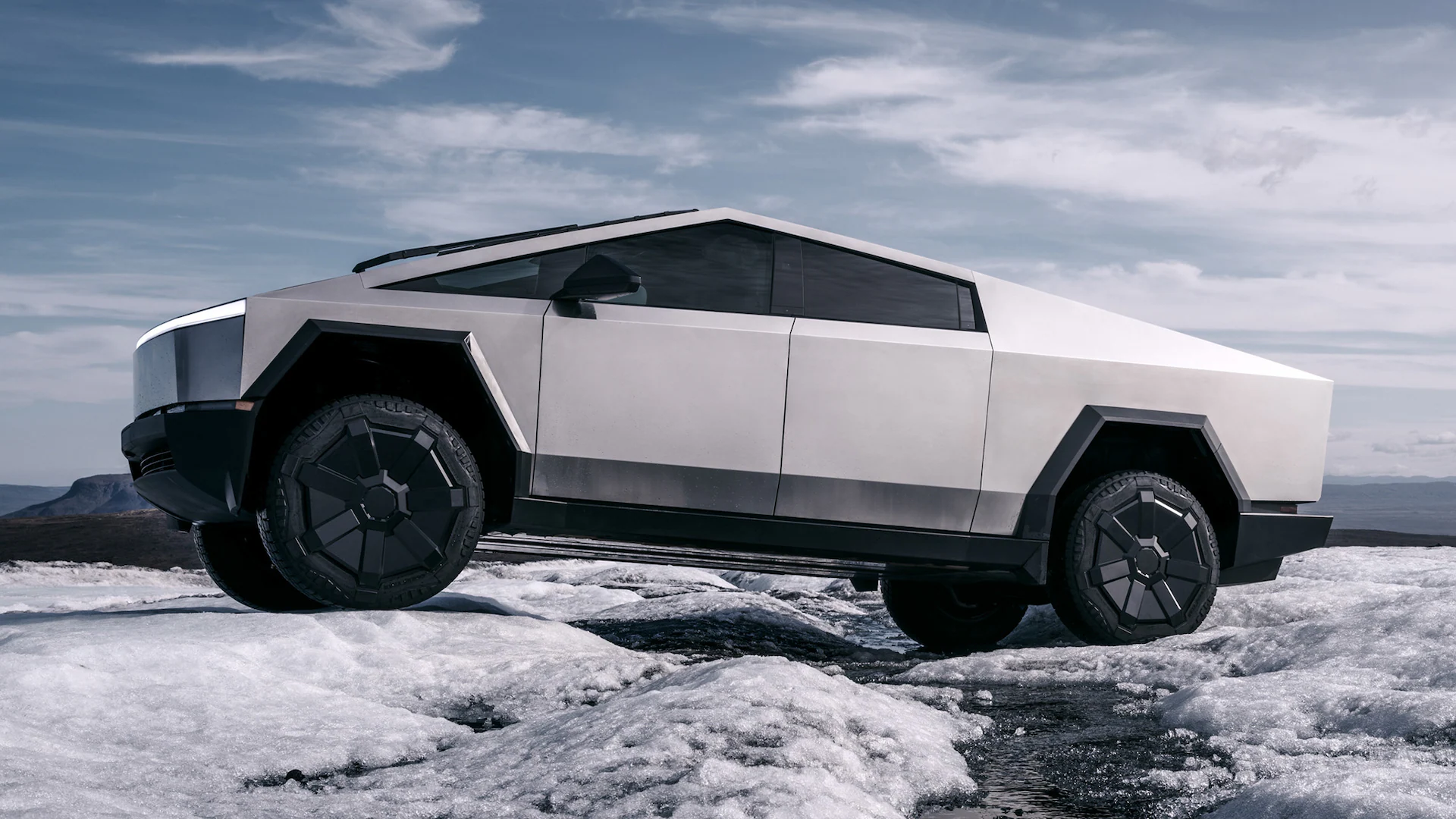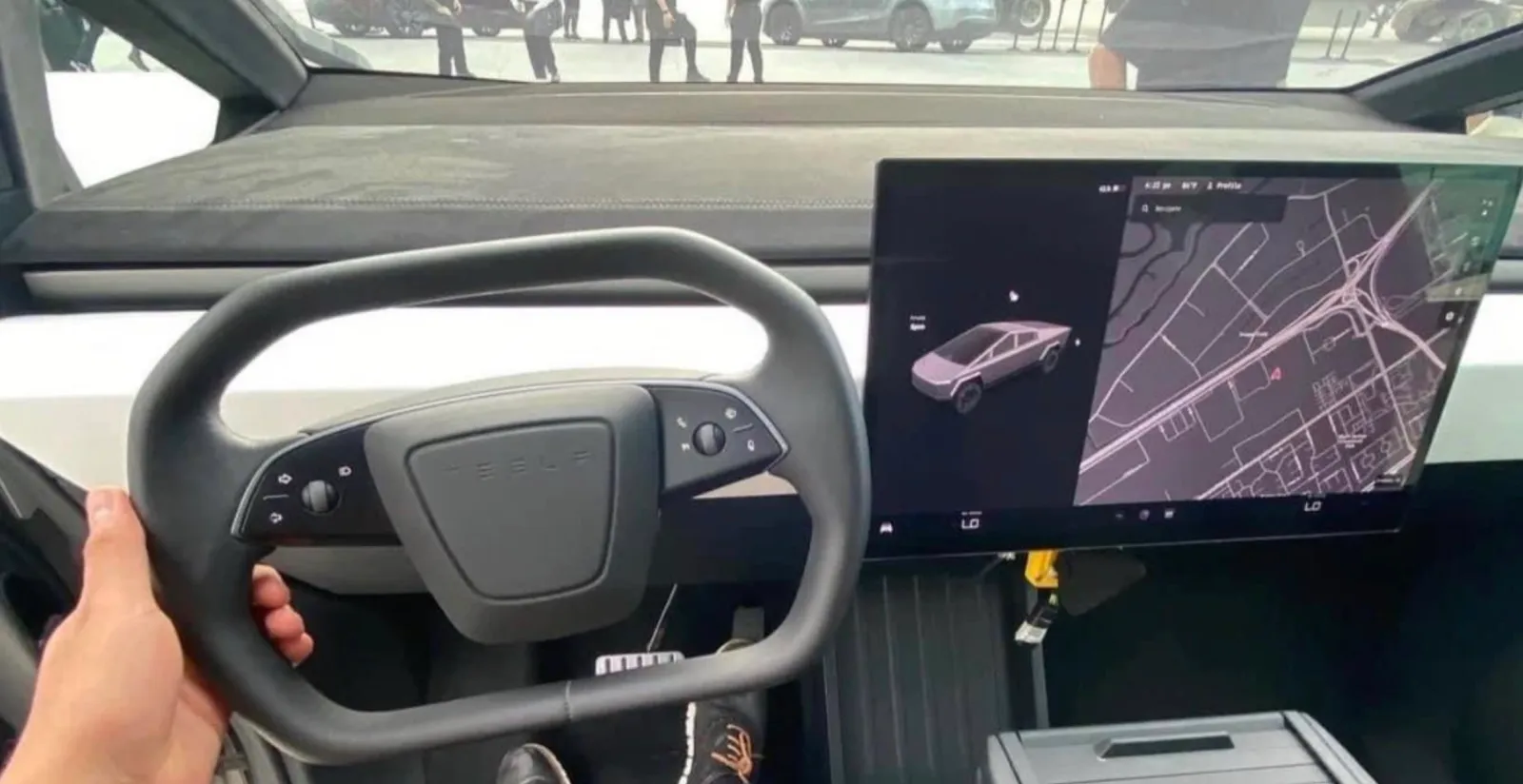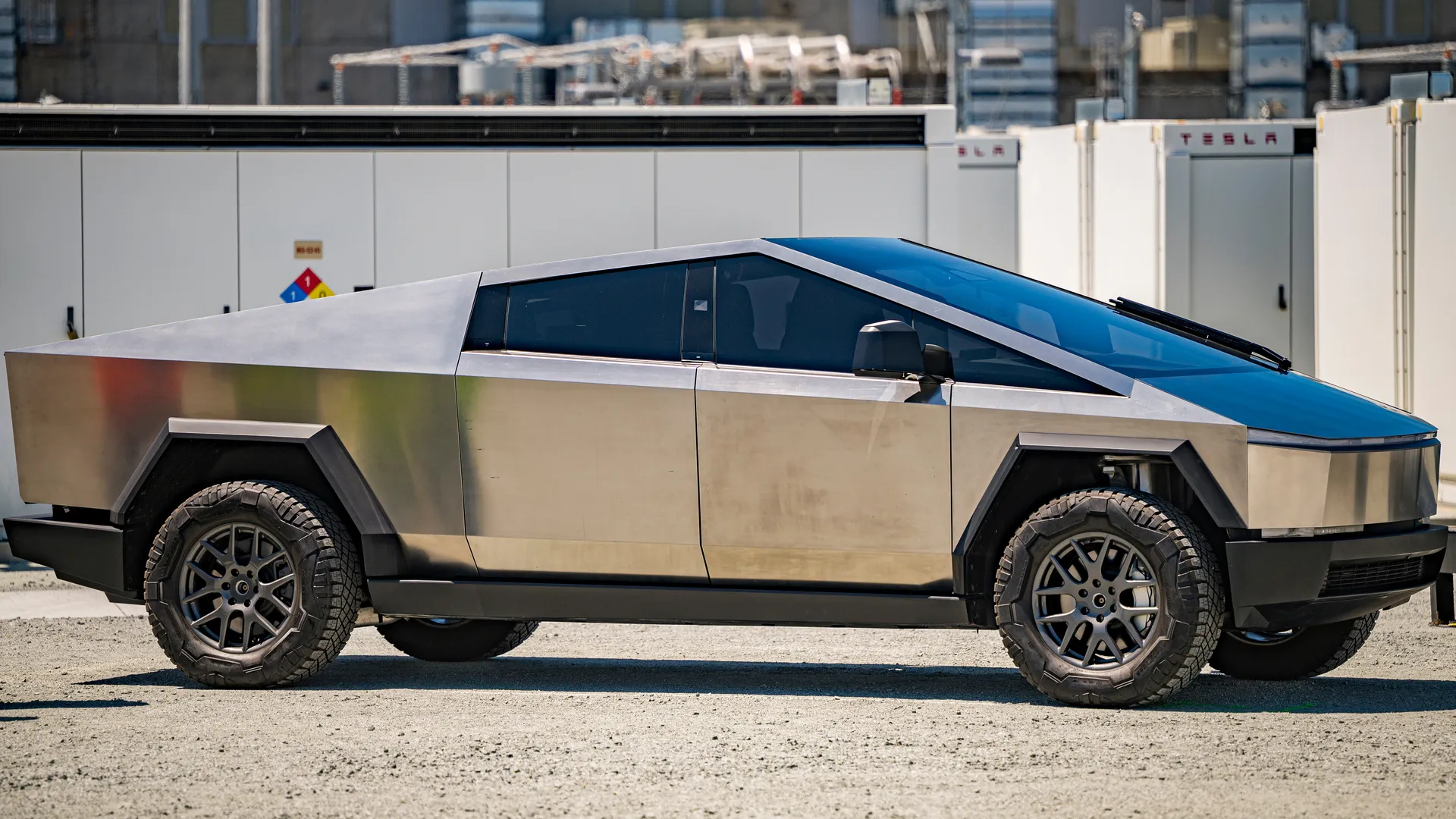We’ve had our doubts about Tesla’s long-awaited Cybertruck. Would it truly embody the essence of a pickup, or would it just be a flashy Model S with a cargo bed? While electric propulsion has proven its worth in pickups with models like the Rivian R1T and Ford F-150 Lightning snagging Truck of the Year awards, Tesla’s unconventional approach to vehicle design left us questioning.
After getting behind the wheel of the Cybertruck, our skepticism has melted away. Despite sharing Tesla’s rebellious design ethos with the S, X, 3, and Y, it’s evident that Tesla’s engineers comprehended the distinct desires and requirements of pickup truck enthusiasts.
What they’ve produced is nothing short of captivating—an intriguing blend of futuristic innovation and practical functionality. Is it just a Model S with a bed? Yes and no, but mostly no.
Let’s talk about the driving experience. The Cybertruck’s standout feature is its four-wheel steer-by-wire system, controlled by a compact rectangular steering wheel that requires less than a full turn from lock to lock.
Maneuverability is enhanced at low speeds, with minor steering inputs resulting in sharp turns, thanks to software-controlled ratio adjustments.
As speed increases, the system moderates the response for better stability and straight-line tracking. While we initially harbored doubts, Tesla has executed this system admirably.
At low speeds, the ability to steer both front and rear wheels tightens the turning circle, although not to the extent seen in the GMC Hummer EV. Nonetheless, it’s notably better than traditional full-size trucks.

Once on the road, the Cybertruck maintains a steady trajectory, with the steering wheel providing a resistance reminiscent of traditional systems.
Making slight corrections feels incredibly responsive, bordering on hyperactive, but it never crosses into twitchy territory. It’s a steering setup that feels tailored for the gaming generation, offering precision and agility.
As for that stainless-steel exterior? Well, that’s a topic for another discussion. But when it comes to the driving experience, the Cybertruck has certainly made believers out of us skeptics.
Tesla has managed to blend its signature innovation with the practicality and ruggedness expected from a pickup truck, making the Cybertruck a compelling contender in the electric vehicle market.
Driving Dynamics: More Natural Than Expected
Set aside any preconceptions about the unconventional steering system, and the Cybertruck’s driving experience reveals itself as surprisingly intuitive. Despite being a pioneer in steer-by-wire technology in the U.S. market, adapting to it was remarkably swift.
Strangely enough, it was the squared-off steering wheel that proved more distracting, tempting us to treat it like an armrest. Once you stop fixating on the unique steering setup, you’ll find yourself easily acclimating to it.

Ride Comfort: Firm Yet Tolerable
The ride quality strikes a balance between firmness and comfort. There’s a familiar jiggle typical of traditional body-on-frame trucks, but it’s far from the jarring discomfort of navigating rough terrain in a heavy-duty dually.
Tesla’s utilization of air springs effectively conceals the Cybertruck’s hefty weight—at least until its limits are tested.
Acceleration and Handling: Impressive Yet Contextual
Acceleration is reminiscent of the Model S when zipping around town. However, once you hit highway speeds, the Cybertruck’s mass becomes apparent, leading to a noticeable drop in acceleration compared to rivals like the Hummer EV and R1T.
Even in its 600-hp dual-motor configuration, there’s a stark contrast between city agility and highway performance. It’s anticipated that the lower-powered single-motor variant might struggle, while the high-performance Cyberbeast version promises fireworks.
Handling is commendable, with minimal body roll and ample grip in turns—until you push it too far and the tires protest. Our test vehicle, a $102,235 Dual Motor Foundation Series model provided by a friend of MotorTrend, showcased impressive dynamics despite its limited mileage.
Interior: Stylish Upgrades and Visibility Challenges
Moving inside, Tesla seems to have addressed criticisms of its Model 3 and Y interiors. The Cybertruck inherits the centralized touchscreen interface but adds touches like vibrant accents, expansive ambient lighting, and exclusive white leather elements available with the $20,000 Foundation Series upgrade, injecting much-needed flair into the cabin.

However, outward visibility leaves much to be desired. The Cybertruck’s design compromises visibility, with obstructive A-pillars and limited rearward sightlines due to the tonneau cover and tailgate configuration.
While the rearview camera aids visibility, it falls short of the effectiveness of integrated rearview mirror displays found in other vehicles. Nonetheless, the uniquely shaped side-view mirrors offer decent visibility.
Ironically, the best view out of the Cybertruck is upwards through the full-length glass canopy, though taller occupants may find headroom compromised by the sloping roofline.
Assessment: Balancing Innovation and Practicality
All in all, while the Cybertruck embodies a futuristic vision of driving, it’s essential to assess its suitability as a pickup truck beyond its technological innovations.
Despite its impressive performance and distinctive design, questions remain about whether it truly fulfills the practical needs of pickup truck enthusiasts or simply serves as a truck-bodied Model S.
Also read: Tuned Mercedes-AMG A 45 S Outpaces Supercars in Stunning Performance

